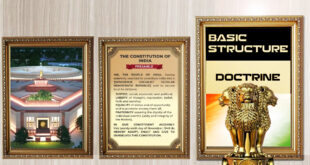Kamaladevi Chattopadhyay has long been recognised in India as the person chiefly responsible, after Independence, for the revival of the country’s variegated crafts traditions and for drawing critical attention to ‘tribal art’. She is generally viewed as an authority on Indian handicrafts, but Chattopadhyay played no less a role in nurturing craftspersons and shaping the cultural institutions that in independent India would be charged with promoting dance, drama, theatre crafts, music, puppetry, pottery and textiles. However, as Chattopadhyay’s Inner Recesses Outer Spaces: Memoirs makes clear, she was also a principal figure in the nationalist movement, destined for high office following Independence. Though she had enormous respect for Gandhi, she also displayed, whenever the occasion demanded, a spirit of defiance to his pronouncements. Chattopadhyay was one of the founders of the Congress Socialist Party but in the aftermath of Partition, she felt disillusioned, and disavowed the political life. She was one of the earliest proponents of women’s rights in India, even as she anticipated some of the critiques that are now familiar of ‘white feminism’, just as she zeroed in on the necessity of arguing for what we may call a feminism on the ground. Forging networks I would add another critical dimension to Chattopadhyay’s life. Though the term ‘Global South’ is nowhere to be found in her writings, it is incipient in her work. Chattopadhyay’s international travels commenced from around the late 1920s. She attended the International Alliance of Women in Berlin in 1929, only to become aware of how race and national boundaries might become obstacles to the solidarity of women. At the Women’s International League for Peace and Freedom meeting at Prague, she was brought to an awareness of the work of Jane Addams and the Hull House. At the International Session of the League against Imperialism in Frankfurt, she found a platform to discuss the common problems of subjugated people. All of this transpired within the space of less than a year; yet Chattopadhyay continued to forge such networks over the course of three decades, facilitating India’s emergence as one of the leaders of the Non-Aligned Movement and the crafting of the Bandung Declaration of 1955 which was a clarion call for a fundamental reordering of the world order. However, if her invisible hand can be discerned in India’s attempts to create a third space in the political global arena when the Cold War was pushing every country to declare its loyalty to either camp, it was her abiding interest in creating solidarity among the colonised people which makes her an especially inspirational figure.
Source : https://www.thehindu.com/todays-paper/tp-opinion/always-a-world-citizen/article25440457.ece
 Chinmaya IAS Academy – Current Affairs Chinmaya IAS Academy – Current Affairs
Chinmaya IAS Academy – Current Affairs Chinmaya IAS Academy – Current Affairs



